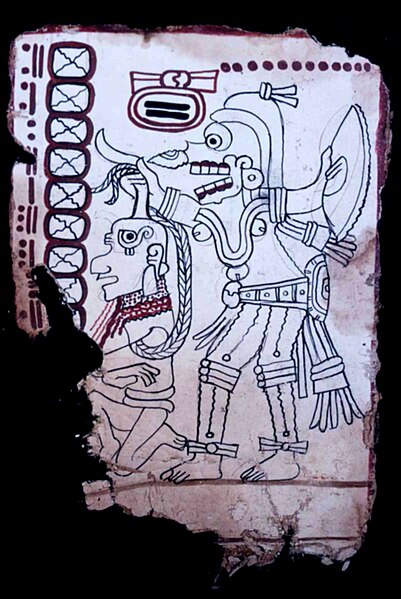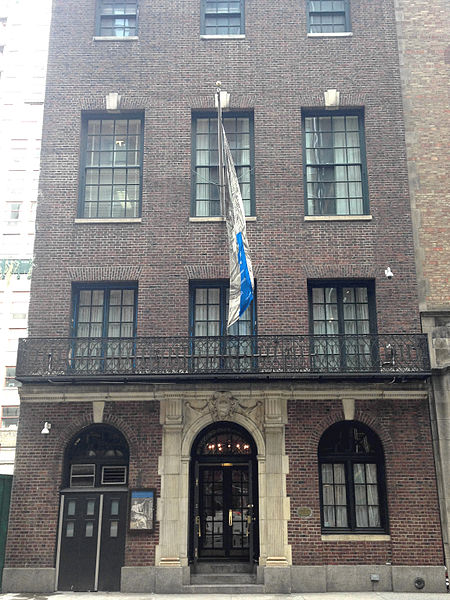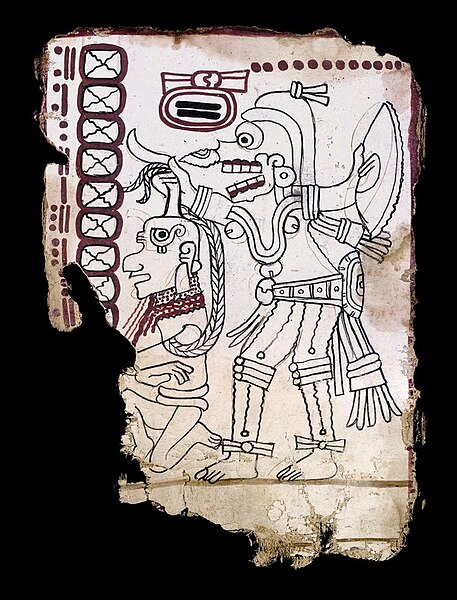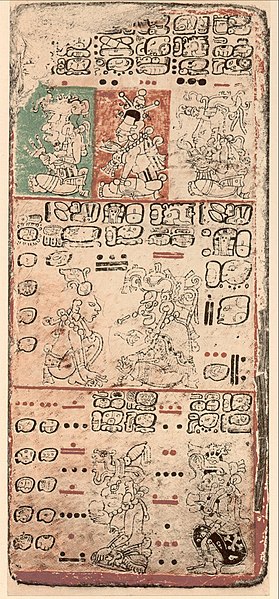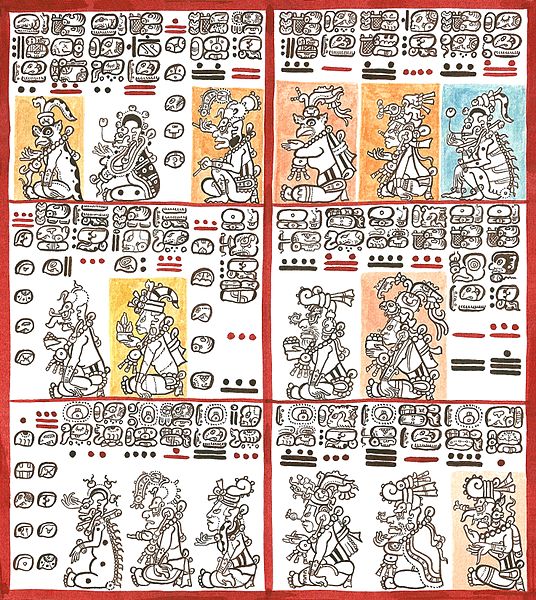The Maya Codex of Mexico (MCM) is a Maya screenfold codex manuscript of a pre-Columbian type. Long known as the Grolier Codex or Sáenz Codex, in 2018 it was officially renamed the Códice Maya de México (CMM) by the National Institute of Anthropology and History of Mexico. It is one of only four known extant Maya codices, and the only one that still resides in the Americas.
Page 6 of the Maya Codex of Mexico, depicting a death god with captive
The Codex was first displayed at the Grolier Club in New York, hence its name
Image: Grolier Codex, page 1
Image: Grolier Codex in Huff Po 1
Maya codices are folding books written by the pre-Columbian Maya civilization in Maya hieroglyphic script on Mesoamerican bark paper. The folding books are the products of professional scribes working under the patronage of deities such as the Tonsured Maize God and the Howler Monkey Gods. The codices have been named for the cities where they eventually settled. The Dresden codex is generally considered the most important of the few that survive.
Page 9 of the Dresden Codex (from the 1880 Förstemann edition)
Plates 10 and 11 of the Dresden Maya Codex. Drawing by Lacambalam, 2001
Facsimile of the Madrid Codex, Museum of the Americas, Madrid, Spain
Paris Codex

